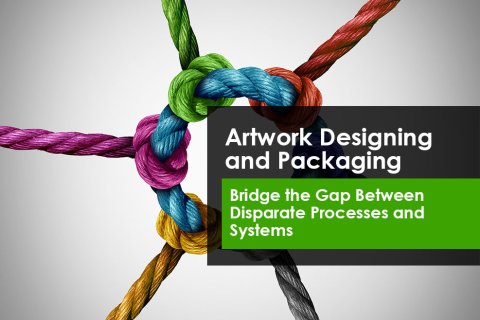Artwork designing and packaging is often treated as an outsourced business segment given the fact that not all the technical team members from the manufacturer’s side will have that creative outlook or the promotional perspective on the subject. Even if they possess the creative knowledge, due to lack of dedicated design suites they prefer it to be outsourced. Thus, making it as a fractionalized business which is tackled by multiple operators, frequently situated at various locations across the globe.
Despite the immense need for correspondence and coordination in the process, the operators often function like independent units, and the impact can be unexpected for the company and clients, all at once. Either to maintain the global brand consistency of a product through complex, non-standard and rigid processes, or to secure the familiarity of a product amid mergers and acquisitions, the need of the hour is to bridge the gap between multiple artwork processes, systems, people, documents, products across the regions. Otherwise, organizations may have to put up with product recalls, counterfeiting, dethroned brand image, ultimately revenue losses. To safeguard the million-dollar business process, artwork designing and packaging, the only way organizations can bridge the gap is to centralize the processes across the globe.
Why centralize?
Artwork designing and packaging isn’t just a part of product beautification, but a standardized form of conveying safety and efficacy to enable consumers to make an informed purchase. To ensure the safety and efficacy is communicated the same accurately across the channels, there is a dire need for artwork centralization. With the artwork centralization organizations can benefit from:
- Improved Visibility
- Increased operational, process and informational management efficiency
- Significant cost reductions
- Eliminate duplicity of information
- Better Compliance
Despite its undisputed benefits, however, artwork centralization process still faces various hurdles in implementation. These require study and are discussed further.
What challenges does centralization face?
- Increased volume of work
- Increased pressure on management
- Varying Regulatory Requirements
- Complex artwork
Despite its challenges, artwork centralization has definite benefits to the organizations to fall in with compliance. Signifying the need to centralize multiple artwork processes, systems, people, documents, and products across the regions, we are pleased to announce that we are organizing a free #webinar on “#Artwork #Centralization #Process – The Impact, Importance and Implementation Approach”. If you may wish to attend for the session, which is on November 28th, 2017, 9:30 AM EST | 5:30 PM GST | 2:30 PM UK, register here.





